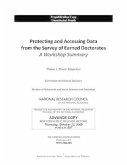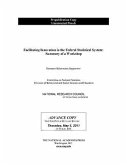All U.S. agencies with counterterrorism programs that collect or "mine" personal data -- such as phone records or Web sites visited -- should be required to evaluate the programs' effectiveness, lawfulness, and impacts on privacy. A framework is offered that agencies can use to evaluate such information-based programs, both classified and unclassified. The book urges Congress to re-examine existing privacy law to assess how privacy can be protected in current and future programs and recommends that any individuals harmed by violations of privacy be given a meaningful form of redress. Two specific technologies are examined: data mining and behavioral surveillance. Regarding data mining, the book concludes that although these methods have been useful in the private sector for spotting consumer fraud, they are less helpful for counterterrorism because so little is known about what patterns indicate terrorist activity. Regarding behavioral surveillance in a counterterrorist context, the book concludes that although research and development on certain aspects of this topic are warranted, there is no scientific consensus on whether these techniques are ready for operational use at all in counterterrorism.
Bitte wählen Sie Ihr Anliegen aus.
Rechnungen
Retourenschein anfordern
Bestellstatus
Storno







